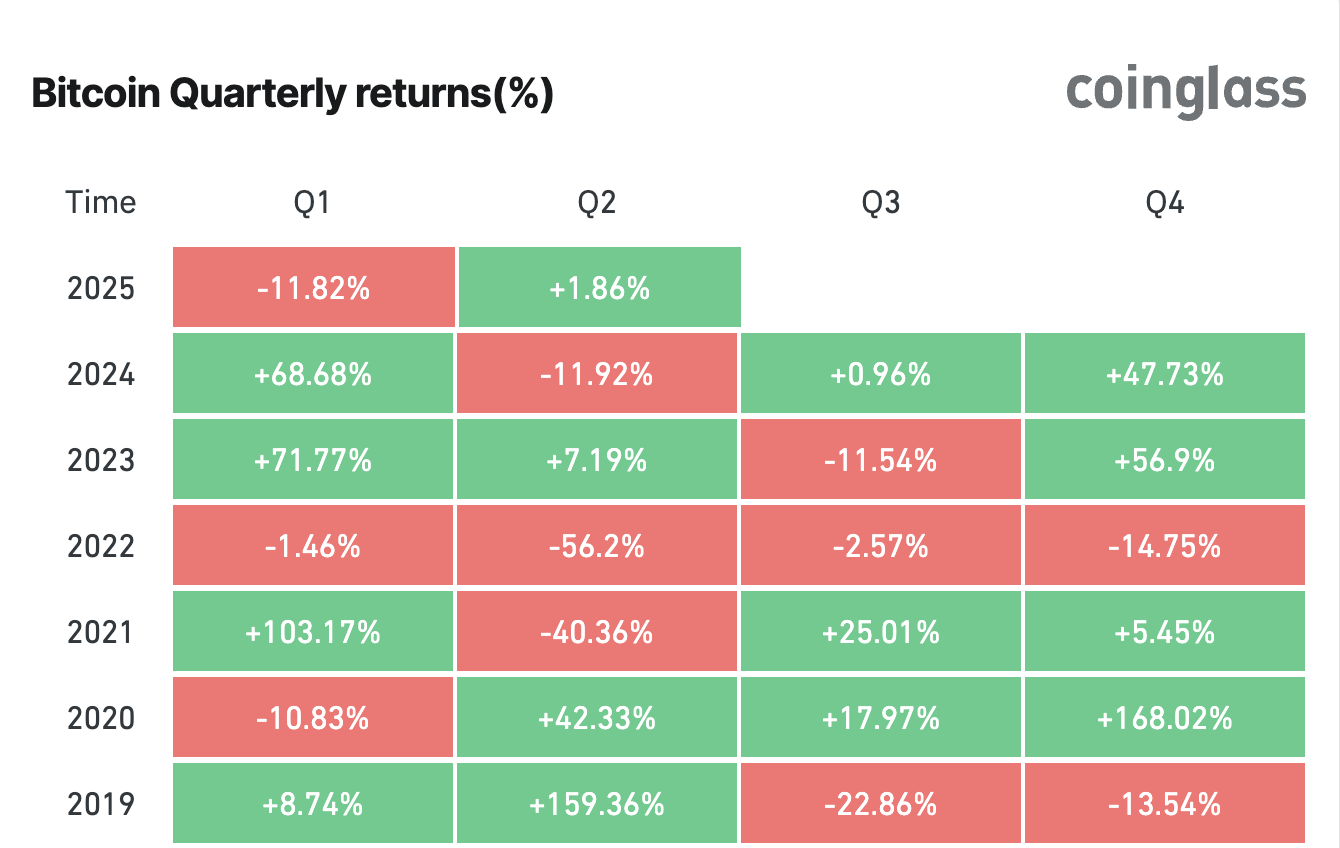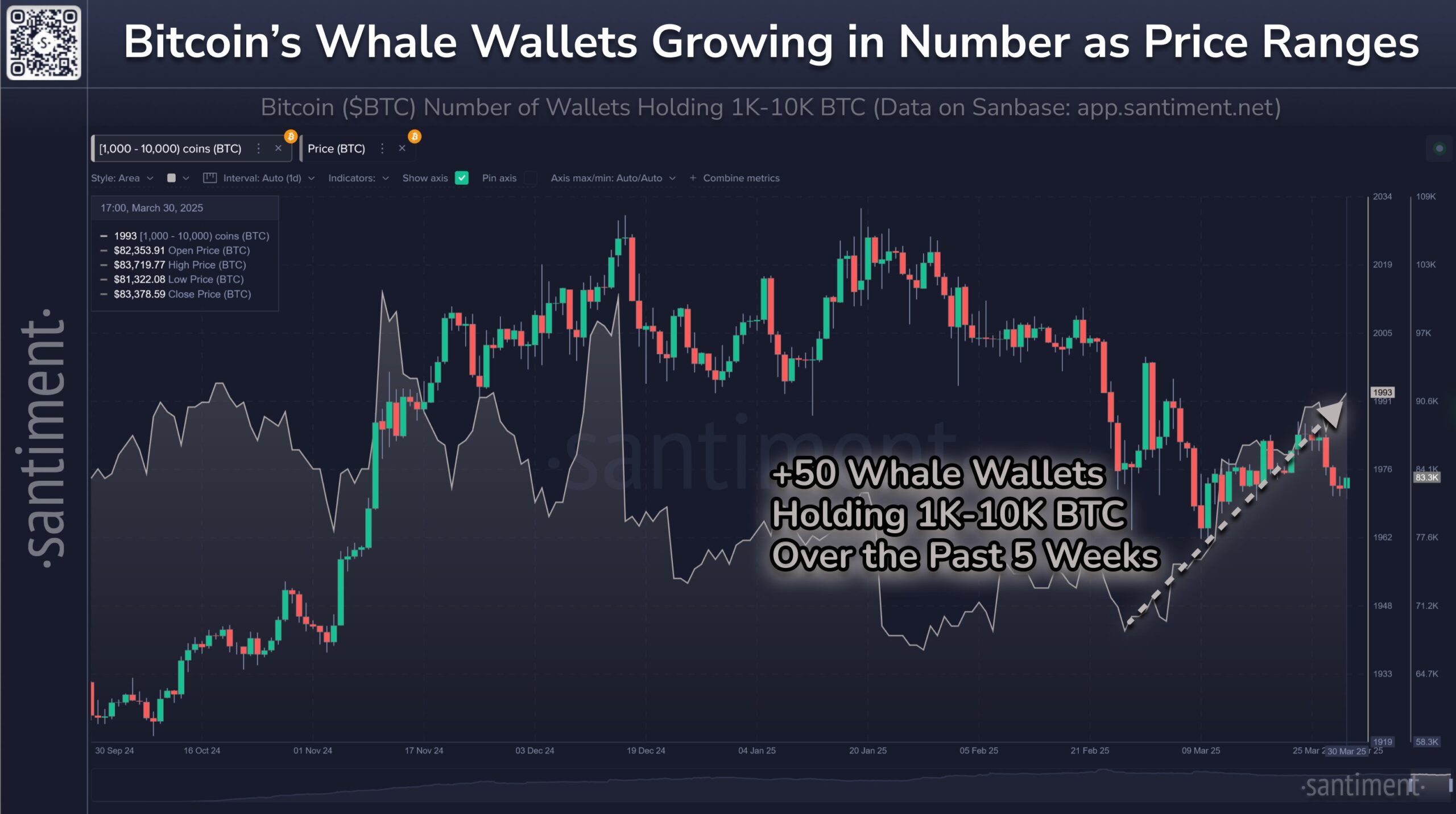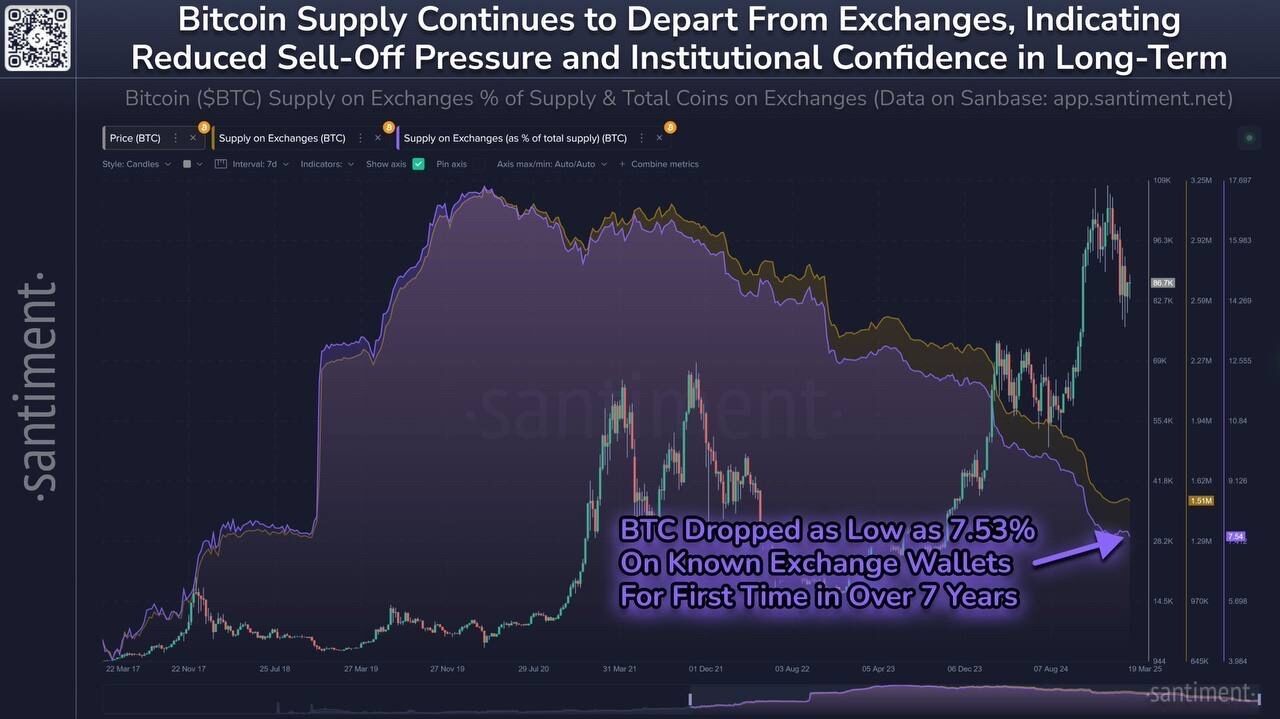-
Bitcoin’s tumultuous start to 2025 saw a dramatic 24% decline in Q1, the most significant drop in seven years, driven by macroeconomic factors and new U.S. tariff regulations.
-
Despite the downturn, large-scale BTC holders (whales) increased their positions by 2.6% in just five weeks, hinting at their growing confidence in the cryptocurrency.
-
According to Glassnode, the inactivity of Bitcoin holders indicates a consolidation phase, reinforcing the possibility of long-term gains ahead.
Bitcoin’s Q1 2025 slump marks a drastic shift in investor sentiment. Nevertheless, whale accumulation and supply drops suggest a potential consolidation phase.
Bitcoin’s Q1 Performance: A Seven-Year Low
Bitcoin’s performance in Q1 2025 has been its weakest since 2018, a year marked by a brutal bear market that saw BTC lose over 50% of its value. Data from Coinglass shows that Bitcoin’s performance in Q1 2025 has decreased by 11.82%. In Q1 2024, Bitcoin recorded an increase of more than 68%.

According to a March 31, 2025 report, Bitcoin’s price has declined from $106,000 in December 2024 to around $80,200 by late March 2025. This drop reflects a combination of macroeconomic pressures and policy uncertainties, particularly following U.S. President Donald Trump’s new tariff policies.
Amid this bearish backdrop, on-chain data reveals a contrasting trend: Bitcoin whales are accumulating. A post from Santiment on X, dated March 31, 2025, reported that the number of whale addresses holding 1,000 to 10,000 BTC has reached 1,993.
This is the highest since December 2024, representing a 2.6% increase over the past five weeks, signaling growing confidence among large holders.

Glassnode reported on March 31, 2025, that trading activity among Bitcoin holders with a 3-6 month horizon has dropped to its lowest level since June 2021. This decline indicates that short-term holders either hold steady or exit the market, reducing selling pressure.
“Spending from BTC holders is at the lowest levels since mid-2021. This inactivity reinforces the idea that recent top buyers are holding their positions rather than exiting, despite recent volatility,” reported Glassnode.
Additionally, on the same day, Bitcoin’s supply on exchanges fell to 7.53%, the lowest since February 2018. Low exchange supply often correlates with long-term holding behavior, creating scarcity that can drive prices higher over time. Together, these metrics suggest that Bitcoin may be entering a phase of accumulation and consolidation.

Market analyst Axel Adler Jr. stated on X on April 1, 2025, that Bitcoin’s selling pressure has been exhausted. Adler predicts a consolidation range forming in April and May, suggesting that the market may stabilize before its next significant move.
Fidelity Research believes Bitcoin is gaining momentum for the next stage of its “acceleration phase.” Fidelity’s analysis draws on historical cycles, noting that periods of consolidation often precede major price increases. It is driven by institutional adoption and Bitcoin’s role as an inflation hedge.
This aligns with the whale accumulation trend and the decreasing exchange supply, pointing to potential upward momentum in the medium to long term.
Conclusion
In summary, while Bitcoin’s Q1 2025 performance has alarmed many investors with a significant downturn, the underlying signals of increased whale activity and decreased supply on exchanges suggest that a consolidation phase might lead to future price recovery. Keeping an eye on these developments will be vital for traders and investors looking to navigate the cryptocurrency landscape over the coming months.
